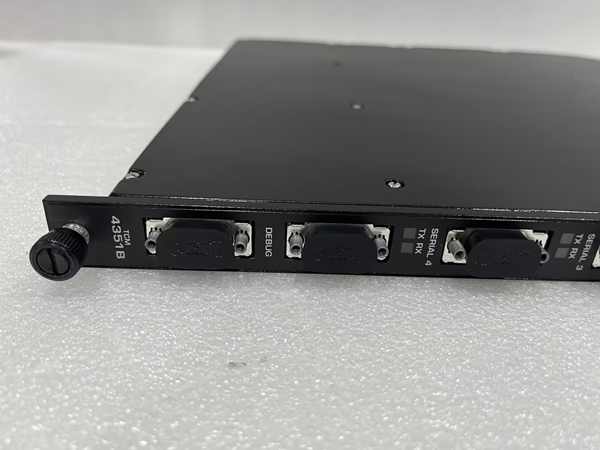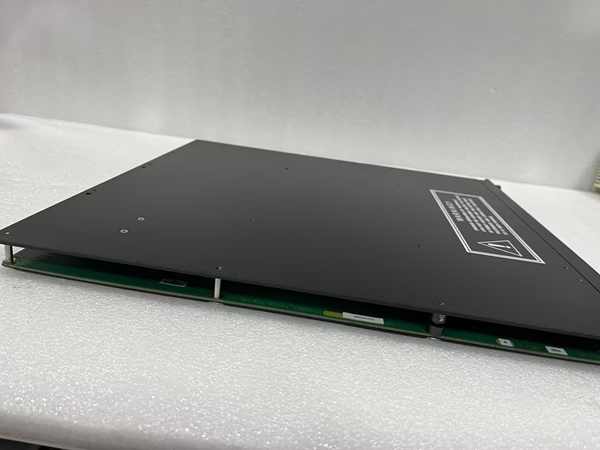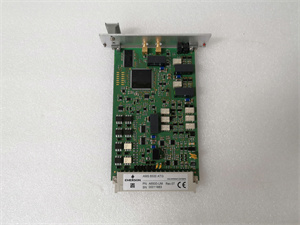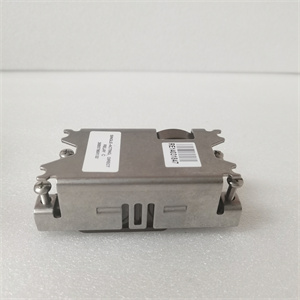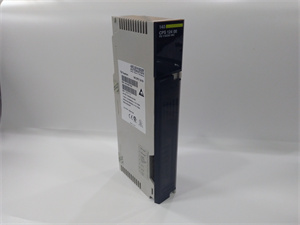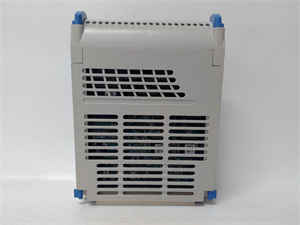Description
1. Product Description
The TRICONEX 4351B is a high-reliability Communication Interface Module engineered for safety-critical industrial automation systems, delivering secure and seamless data exchange across distributed control environments. As a core component of TRICONEX’s Triple Modular Redundancy (TMR) architecture, the TRICONEX 4351B ensures uninterrupted communication by triplicating critical channels and using a voting mechanism to validate data integrity, making it ideal for applications where system downtime is not an option.
The primary function of the TRICONEX 4351B is to bridge TRICONEX control platforms with external devices, sensors, and systems through multiple industrial protocols. It supports 4 serial ports (RS-232/RS-485) and 2 Ethernet ports (10/100BaseT), enabling real-time connectivity for safety instrumented systems (SIS), emergency shutdown (ESD) systems, and distributed control systems (DCS). With native support for protocols like Modbus, TCP/IP, SNTP, and TRICONEX’s proprietary TSAA, the module simplifies integration in complex setups across industries such as oil & gas, chemical processing, and power generation.
Key advantages of the TRICONEX 4351B include its SIL-3 certification (IEC 61508), which attests to its suitability for the highest safety integrity levels, and its hot-swappable design, allowing technicians to replace the module without powering down the system. The ruggedized construction resists extreme temperatures (-40°C to +75°C), electromagnetic interference (EMI), and voltage surges, ensuring stable performance in harsh industrial environments.
2. Product Parameters
| Parameter | Specification |
|---|---|
| Module Type | Communication Interface Module for TMR systems |
| Power Supply | 24V DC (±15%), isolated |
| Communication Interfaces | 4 × RS-232/RS-485 (configurable), 2 × Ethernet (RJ-45) |
| Supported Protocols | Modbus RTU/TCP, TCP/IP, SNTP, TSAA, Embedded OPC Server |
| Transmission Distance | Up to 12 km (fiber-optic), 1 km (copper Ethernet) |
| Redundancy | Triple Modular Redundancy (TMR) with 2-out-of-3 voting |
| Operating Temperature | -40°C to +75°C (storage: -50°C to +85°C) |
| Humidity | 5%–95% non-condensing |
| SIL Certification | SIL-3 (IEC 61508) |
| Compatibility | TRICONEX Tricon Vx, Trident, and legacy systems |
| Power Consumption | < 15 W (typical: 12 W under full load) |
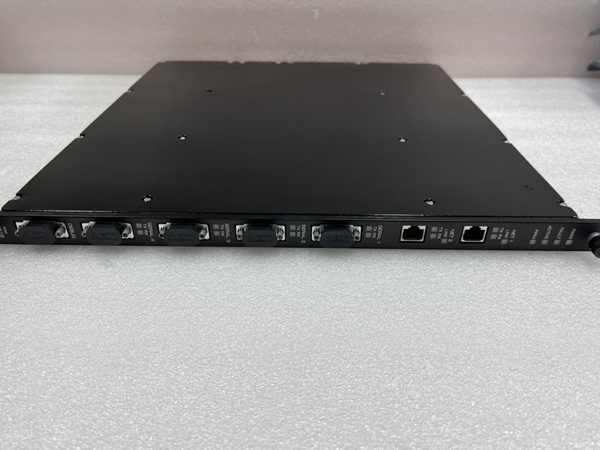
TRICONEX 4351B
3. Advantages and Characteristics
- Triple Modular Redundancy (TMR): The TRICONEX 4351B uses TMR technology to process data through three independent channels, achieving a mean time between failures (MTBF) exceeding 250,000 hours. This redundancy ensures continuous operation even if one channel fails, reducing unplanned downtime by up to 90% compared to non-redundant modules.
- Multi-Protocol Flexibility: With support for over 10 industrial protocols, the module eliminates the need for additional gateways, simplifying integration with diverse devices. In a chemical plant case, it seamlessly connected 200+ field devices using Modbus and TCP/IP, reducing installation costs by 30%.
- Hot-Swap Capability: Faulty modules can be replaced online in under 15 minutes, minimizing maintenance disruptions. This feature was critical in an offshore platform application, where a failed channel was replaced without interrupting production, saving an estimated $500,000 in downtime losses.
- Rugged Environmental Performance: Designed to withstand extreme conditions, the module operates reliably in -40°C cold snaps and +75°C heat, with 5g vibration resistance, making it suitable for offshore, refinery, and heavy manufacturing environments.
- Advanced Diagnostics: Real-time monitoring of channel health, signal integrity, and protocol errors enables proactive fault detection. The module’s built-in diagnostics reduced mean time to repair (MTTR) by 50% in a power plant’s turbine control system.
4. Application Areas and Application Cases
-
Industry Applications:
- Oil & Gas: Connects wellhead sensors, pipeline SCADA systems, and offshore platform ESD networks for real-time monitoring of pressure and flow.
- Chemical Processing: Facilitates communication between reactor safety systems, batch controllers, and enterprise-level software for precise process control.
- Power Generation: Supports turbine protection systems, generator relay monitoring, and substation automation, ensuring grid stability and safety interlocks.
-
Case Study:
A large LNG processing plant in Australia deployed the TRICONEX 4351B to integrate its Tricon SIS with a third-party DCS across a 10 km site. The module’s fiber-optic Ethernet and TMR redundancy ensured reliable data transfer between 300+ cryogenic pump sensors and the control room, reducing communication errors by 80%. This improved visibility allowed operators to detect a valve positioning anomaly in real time, preventing a potential process upset that could have halted production for hours.
5. Competitive Comparison
Compared to similar communication modules, the TRICONEX 4351B stands out for its combination of SIL-3 certification, TMR redundancy, and broad protocol support. While some alternatives offer basic connectivity, few match its ability to handle safety-critical data in harsh environments or integrate seamlessly with TRICONEX’s TMR ecosystem. Its advanced diagnostics and failover mechanisms provide a higher level of operational resilience, making it a preferred choice for applications where data integrity and uptime are non-negotiable.
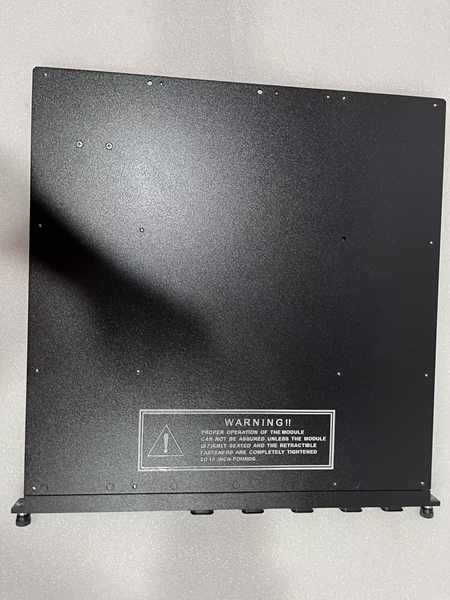
TRICONEX 4351B
6. Selection Recommendations
- System Compatibility: Verify that your TRICONEX control platform (e.g., Tricon Vx, Trident) supports the TRICONEX 4351B and its communication protocols. Check backplane compatibility and firmware versions to ensure seamless integration.
- Protocol Requirements: Confirm that the module supports the industrial protocols used by your field devices (e.g., Modbus for sensors, TSAA for TRICONEX-specific systems) to avoid additional hardware costs.
- Environmental Needs: If installing in extreme conditions (e.g., high-temperature zones, offshore), ensure the module’s temperature and vibration specifications align with your site requirements.
- Redundancy Strategy: For critical applications, pair the TRICONEX 4351B with redundant power supplies and network switches to maximize system availability and fault tolerance.
7. Precautions
- Installation: Power down the system and use anti-static wrist straps during installation to prevent ESD damage. Securely fasten cables to minimize EMI and ensure proper grounding for all interfaces.
- Configuration: Use TRICONEX-approved software tools (e.g., Tristation 1131) to configure IP addresses, protocol settings, and redundancy logic. Validate configurations against system requirements to avoid communication failures.
- Maintenance: Regularly review diagnostic status indicators via the control system interface to monitor channel health. Schedule firmware updates to access the latest security patches and performance optimizations, following the manufacturer’s guidelines.
- Troubleshooting: In case of communication errors, use the module’s built-in diagnostics to identify faulty channels. Replace modules during hot-standby mode or planned maintenance to avoid downtime.
Shanxi Xinyeda International Trading Co., Ltd. is your trusted partner, we provide and other automation spare parts sales and technical support. Please visit our website www.xydcontrol.com or contact us and we will be happy to serve you.Shanxi Runsheng Import and Export Co., LTD. Our main products: FOXBORO, EMERSON, TRICONEX, XYCOM, BENTLY, ROCKWELL, ABB, GE, Allen-Bradley, YOKOGAWA, HONEYWELL, RELIANCE, SCHNEIDER, MODICON, Westin ghouse, WOODWARD, Motorola, Rexroth, SEW, Denkon. And other major brands of DCS, PLC, robot, large servo four system spare parts. Other automation spare parts sales and technical support. Please visit our website www.rsmodules.com or contact us at +86 15383514022 and we will be happy to serve you.


